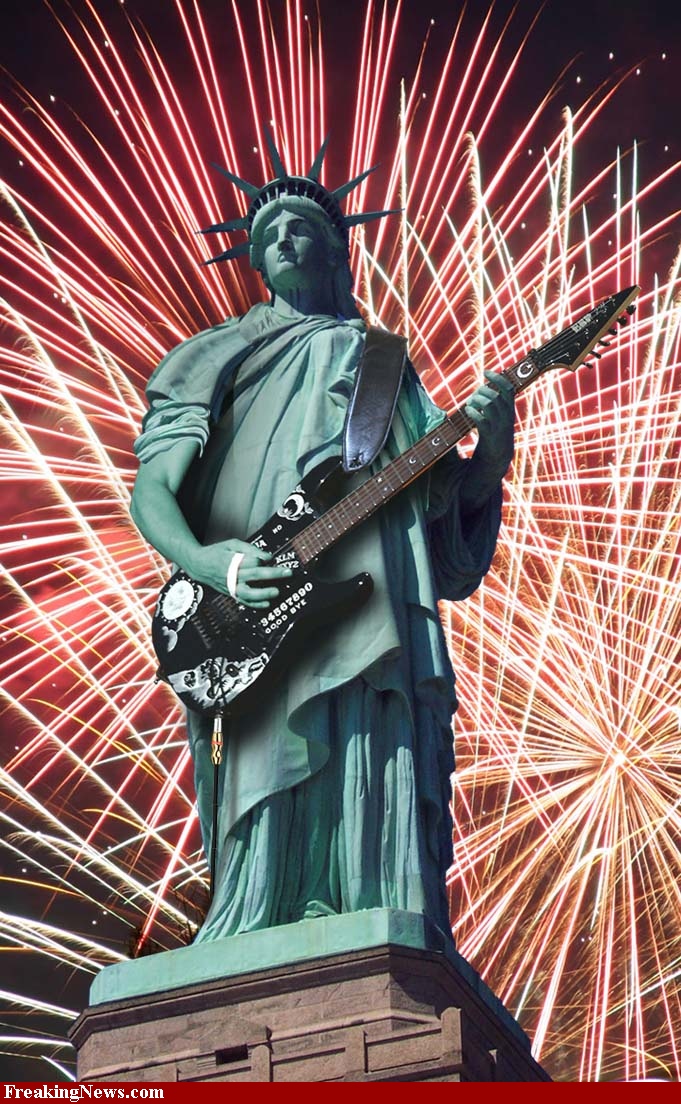|
Midterm1 (2013 midterm1 assignment) Sample Student Midterm Answers 2013 #1: Long Essay |
LITR 4333
|
 |
Anthony Randall
10/7/2013
The Dominant Culture
In
the United States of America there is a social structure that directs the
interaction between the dominant culture, the immigrant culture, and the
minority culture. Within the
dominant culture there is an unmarked social contract which is guided by a set
of values and expectations that are not only illustrated by this group, but
these values are expected of the immigrant and minority groups in order for full
acceptance into the ranks of the dominant culture. The process in which these
values are gained is called assimilation. One of the main characteristics that
really defines the dominant culture is their predominance and powers, which are
primarily associated with Caucasian Americans and usually having a
socio-economic status of at least middle class. However, being Caucasian or
being middle class is not exclusive or definitive to being accepted into the
dominant culture but is rather the standardized image. But the judging criterion
by the dominant culture is usually judged by the progress of education,
community, and progress of immigrant and minority groups. How members of the
immigrant and minority cultures assimilate into the dominant culture are given
analysis in respect to education, community, and their progress into the ranks
of the dominant culture.
The dominant culture in America typically
represents the “American Dream” which is commonly viewed as the economic model
of stability and privilege by the immigrant and minority cultures. One of the
vehicles to achieve economic stability is commonly through education. The
immigrant experience in America typically views education as the primary source
to become a part of the dominant culture. One of the ideal groups of immigrants
that are typically viewed as representation of the dominant culture values of
hard work, commitment to education, extended family stability, and
socio-economic progress are Asian Americans. Asian Americans are viewed as the
perceived image of the “ideal immigrant”. Asian Americans are commonly viewed as
the model example due to their resemblance within their culture of similar
values that the dominant culture shares. Their focus on education, family, and
hard work is admired by the dominant culture. For example in the text In
The American Society it gives an
example of how Asians are able to adapt to the dominant culture value system,
“She didn’t work at the supermarket anymore; but she had made it to the rank of
manager before she left, and this had given her not only new words and phrases,
but new ideas about herself, and about America, and what it was in general.”
This illustrates how Asians can come into America society and adapt to the ideas
and values of the dominant culture, often times quickly.
The minority culture experience as it relates to the
dominant culture is a little more complex than the immigrant culture experience
when it comes to using education as a vehicle to reach the ranks of the dominant
culture. One minority group in particular is African Americans and the history
of systematic racial discrimination institutionally, denial of certain jobs, a
history of racial discrimination, and an overall resistance of economic
advancement within the ranks of the dominant culture via way of education. The
denial of equal access of quality education is a denial to all the values the
dominant culture represents. African Americans were denied equal access to
education up until 1954 in The Brown vs. The Board of Education, where The
United States Supreme Court declared state laws establishing separate public
schools for black and white students unconstitutional. These types of laws could
create many psychological barriers in the African American community giving the
impression that “The American Dream” is not intended for them, versus the
optimistic view the immigrant culture may have of the “The American Dream” who
doesn’t face as much or very little opposition into the ranks of the dominant
culture. Some in the dominant culture have made the argument that although
America has had a history of racial discrimination against minority groups such
as African Americans particularly via way of education, that discrimination is
no longer an issue pointing out the successful assimilation of the “ideal
immigrant” such as Asian Americans into American society.
This view has led to one the arguments against affirmative
action policies for minorities such as African Americans. According to the
article Report Take Aim at Model Minority
Stereotype of Asian American Students, “The report said model-minority
perception pitted Asian-Americans against African Americans.”
The report also shows different
stereotypes that are placed on Asian Americans. The argument against policies
such as affirmative action are primarily based on the premise that
discrimination in the form of denial of equal access to educational
opportunities are no longer valid for African Americans, pointing out the
playing field is equal for all minorities, comparing the successful assimilation
of Asians into American society. However, a flaw in that argument is not only
neglecting the fact that African Americans have endured a systematic history of
racial discrimination compared to that of the immigrant group Asian Americans,
there is also a selection process in which only allows for the educated and
economically advantaged Asian immigrants to enter into America. This selection
process allows for a distorted view of what is to be an “ideal immigrant” in
America and creates a false comparison of the two groups, for one group who has
come to America with educational advantages, versus another group who has
historically been systematically denied education advancement. This represents a
distinct difference between the immigrant culture experience and the minority
culture experience, and how each group view and utilize education as means to
rise into the ranks of the dominant culture.
The immigrant culture in dealing with their
sense of community tends to often model that of the dominant culture as their
process of assimilation evolves. As individuals of the immigrant culture move
into the ranks of the dominant culture, their sense of community and style of
living is similar to that of the dominant cultures, typically moving into gated
communities, suburban areas, and secure compounds. The immigrants’ sense of
community is accompanied by drive for improvement. In the text
The English Lesson each student gave
a brief introduction about themselves. Each of their stories represented a
similar theme of self-improvement in order to gain economic advancement into the
dominant cultures standard of living. One of the introductions of a student in
The English Lesson she states, “My
name is Rogelia Doleres Padillo. I come from Canovanas in Puerto Rico. In a
small village in the mountains near El Junge Rain Forest. My family is still
living there. I marry and live here with my husband working in business of
restaurant. Call Rude’s Luncheonette, I been here in New York city lower East
Side since I marry, which is now about one year. I study Basic English to
improve my vocabulario and learn more about here. This way I help my husband in
his business and I do more also for myself, including being able to read better
in English. Thank you!” This one introduction illustrates how the immigrant
culture need for self-improvement is realized and is used as a mechanism to move
into the ranks of the dominant culture standard of living. So the immigrant
culture sense of community is modeled after the dominant culture’s standard of
living after the process of assimilation.
The minority culture’s sense of community seems to
be a relationship built on ideas that sometimes particularly reject the idea of
the dominant culture standard sense of community. In the
American Horse it really illustrates
how the dominant culture idea of community is not always wanted or preferred by
the minority culture. In the aspect of family within the community, the social
worker Vicki Koob, and two police officers, officer Bracket, and officer Harmony
are basically trying to take away the parental rights of a Native American mom
by taking way her son. The reason for taking the son Buddy away from his mom
Albertine American Horse and his Uncle Lawrence was because the living
environment did not meet the dominant culture standard of living conditions
disregarding the fact that Buddy himself felt safe and happy in his current
living environment, and with his family.
The social worker Vicki Koob states, “I want to find that boy and salvage
him.” Vicki Koob explained to officer Brackett as they walked into the house.
“Look at his family life, the old man crazy as a bed bug, the mother intoxicated
somewhere.” This illustrates how the social worker who is a part of the dominant
culture shows her disapproval for a family who is a part of a minority group,
Native Americans. It also illustrates how a minority group can reject the
dominant culture standard of community.
The dominant culture image is an immigrant’s
model for their measurement of progress an individual has made to reach the
ranks of the dominant culture. That measurement of progress is also critiqued by
the dominant culture based on their values. An example is illustrated in the
text of Soap and Water. Although education is one of the most significant and
primary sources to reach the ranks of the dominant class, image, and appearance
is just as equally important. A part of the dominant value system is the
representation of cleanliness, so it’s only reasonable to assume that a part of
the process of progress of assimilation requires an understanding that when
trying to get a professional job a clean appearance matters. In this text
particularly the immigrant really had a narrow focus on the overall objective of
achieving her diploma while neglecting her appearance. Miss Whiteside the dean
of the college who is a figure of representation of the dominant cultures
authority, and who has the authority to judge her progress into the dominant
culture notices she has not reached her full potential for assimilation and
makes her recommendation for the immigrant complete transition into the dominant
culture. According to the text immigrant states, “The last time when she (Miss
Whiteside) threatened to withhold my diploma, because of my appearance, this
last time when she reminded me that “Soap and Water are cheap, anyone can be
clean,” this last time something burst within me.” This illustrates the dominant
culture expectations of an immigrant’s acceptable appearance that’s suitable
enough to fit into the ranks of the dominant class. The immigrant’s narrow focus
on education limited her progression into the dominant class and she illustrates
her limited focus by stating, “Even if I had the desire and energy to take a
bath, there were no such things as bath tubs in the house where I lived.” She
sacrificed and worked very hard to obtain her diploma even taking courses she
had no fulfilling interest in but she understood the importance of education. If
her focus on image and appearance was just as equally shared just as it was on
her diploma, there may have been little resistance from the dominant culture for
her acceptance into its ranks. The dominant culture rejection came into full
display even after receiving her diploma. In the text it states, I soon found
other agents of clean society, who had the power of giving or withholding the
positions I sought, judging me as Miss Whiteside judged me.” This illustrates
how the immigrant culture experience for progress for assimilation into the
ranks of the dominant culture are directed and judged by the values of the
dominant culture.
The measurement of progress the minority
culture experience into the ranks dominant culture can be viewed differently
than that of the immigrant culture experience into the ranks of the dominant
culture. What makes a minority experience unique to that of an immigrants’
experience is their racial features, how an individual looks, their skin color,
hair etc. Particularly Native Americans and African Americans typically are the
minority groups who have distinguishing physical features that are different
from that of the dominant culture, with the primary distinguishing feature being
skin color, separating these minority groups from the dominant cultures standard
image of being Caucasian. Given the history of this country based on racial
discrimination there could always be awareness from certain minority groups such
as African Americans who’ve experienced racial discrimination solely based on
the color of their skin. For a minority group such as African Americans being
physically different from a racial perspective and given that even if they are
successful at the assimilation process and make it into the ranks of the
dominant culture, their racial identity will always be a distinct factor. In the
poem Blonde White Women it states,
“In first, my blonde teacher hugged me to her because I was the first in my
class to read, and I thought the rush would kill me, and I wanted her to swallow
me, to be my mother, to be the first fire moving in my breast. But when she
pried me away, her cool blue eyes shining with righteousness and too much touch
I saw how she wanted to wash.” This illustrates two perspectives, one of the
dominant culture where you have a white teacher and although she is proud of her
students accomplishment of being the first in class to read, she allows her
views of racial differences to display her feelings of imperialism by wanting to
wash after hugging the African American student, also signaling her place within
the dominant culture by showing the dominant culture value of cleanliness,
reflecting the view that this particular minority group didn’t represent the
dominant culture value of cleanliness. It also allow for reflection from the
minority perspective of what it means to be black in the eyes of the dominant
culture. In the text it states, “I could not have been blacker than I was at the
moment. My name is Patricia Ann.” This illustrates her realization she could
never embody the full complete image of that of the dominant culture, she could
never be white. This illustrates a minority experience within the minority
culture, and the progress minority groups such as African Americans make toward
the assimilation process into the ranks into the dominant culture, it also
displays how race will always be a uniquely distinct factor that distinguishes a
minority group such as African Americans from that of the dominant culture. But
despite what history has shown race is no longer a prevailing prohibition into
the ranks of the dominant culture and is no longer socially common to prevent an
individual into the ranks of the dominant culture.
The immigrant and minority culture offers
different perspectives on how and what it means to reach the ranks of the
dominant culture. According to an essay written in 2008 by Omar, “The Dominant
Culture does not assimilate or conform to anyone; others conform to the Dominant
Culture.” This is true and it also
reflects how the Minority and Immigrant cultures view the dominant culture in
America. The expectations of the assimilation process is pretty much standard
for the both cultures in order to reach the ranks of the Dominant Class. How the
immigrant and minority culture view the process of assimilation through the
education, community, and progress are shaped by their different experiences
with the Dominant Culture in America.



